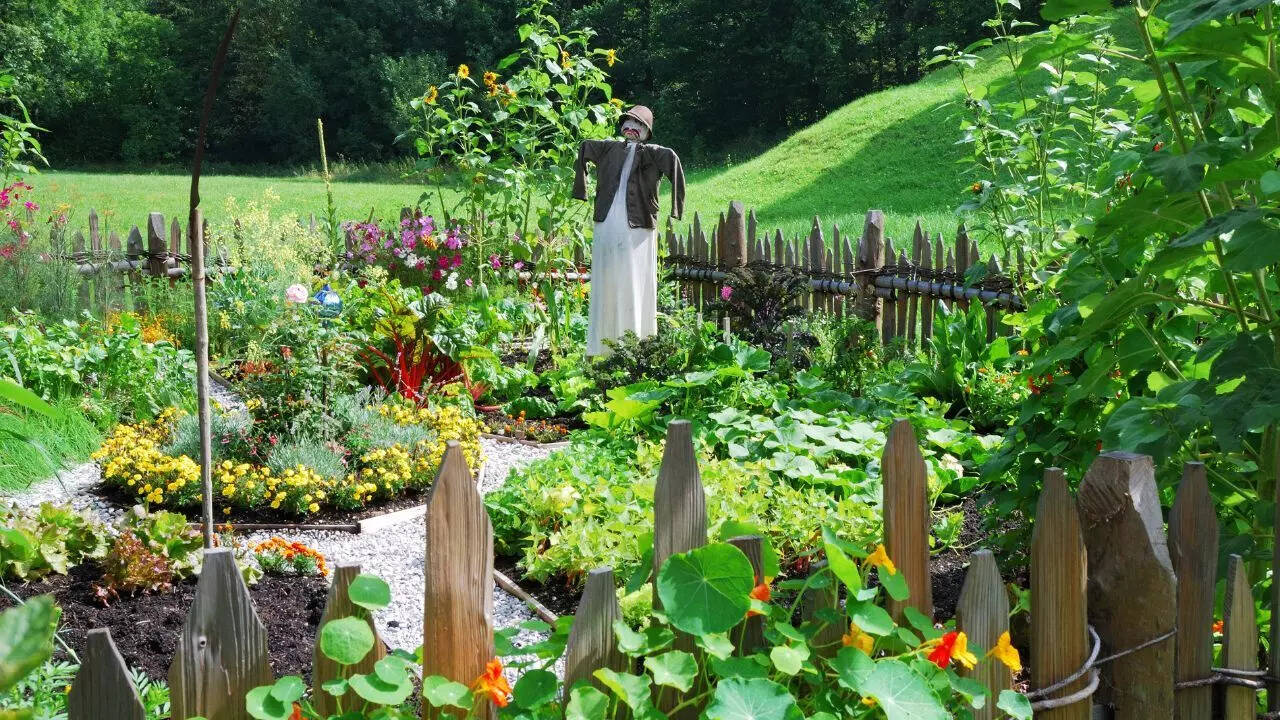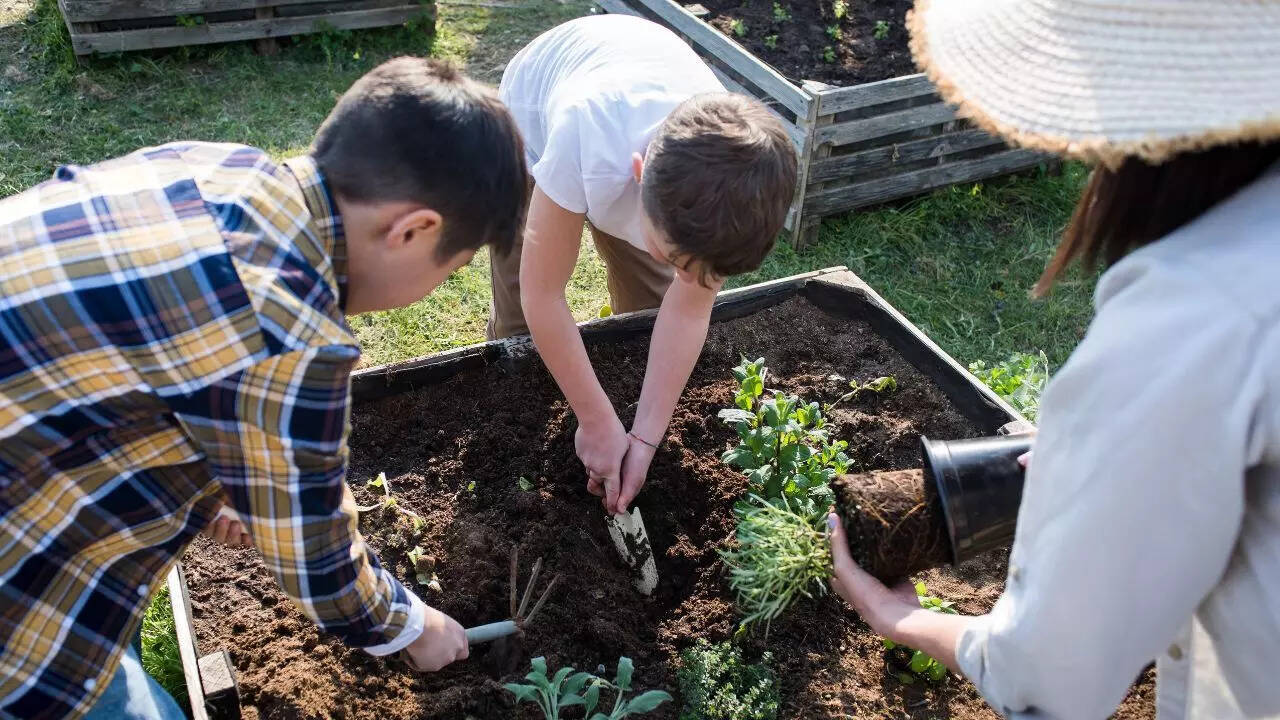The monsoon season breathes life back into the earth, providing essential water and relief from the intense summer heat. For gardeners, it's nature's signal to cultivate, plant, and nurture a thriving kitchen garden. The combination of ample rainfall, softened soil, and moderate temperatures creates an ideal environment for growing your own food. Whether you're an experienced gardener or just starting out, the monsoon season offers a unique opportunity to connect with nature and enjoy the rewards of homegrown produce.
As the rains nourish the soil, expect your garden to flourish with vibrant greens, crisp vegetables, and a variety of colorful flowers. This season provides a chance to get involved, and experience the satisfaction of nurturing life and watching your garden thrive. With each seed planted and harvest gathered, you'll find joy in the simple act of cultivating your own food.

The frequent rains during the monsoon season keep the soil consistently moist, reducing the need for frequent watering. Temperatures ranging from 20°C to 30°C (68°F to 86°F) encourage seed germination, while the high humidity enhances nutrient absorption by plants.
To ensure success, proper drainage is essential to prevent waterlogging, which can harm plant roots. Imagine planting seeds that will soon provide fresh produce for your table, all while being soothed by the sounds and scents of nature.
Choose the Right Location: Select a spot that receives 4-6 hours of indirect sunlight daily and is not prone to waterlogging. Good air circulation is also crucial to prevent fungal diseases.
Prepare the Soil: Gently loosen the soil and amend it with compost to improve fertility and drainage. Incorporate organic matter such as well-rotted manure to enrich the soil with essential nutrients.
Planting: Follow recommended spacing guidelines to ensure healthy growth and development. Consider companion planting to maximize space and promote beneficial interactions between different plants.
Watering: Take advantage of the natural rainfall, but monitor soil moisture levels to prevent waterlogging. Check the soil by inserting your finger about an inch deep before watering.
Mulching: Apply a 2-3 inch layer of organic mulch, such as dried leaves or straw, around the plants. This helps retain moisture, suppress weeds, and regulate soil temperature.
Pest Control: Use natural pest deterrents like neem oil or garlic-chili spray to protect your plants from pests. Encourage beneficial insects like ladybugs to help control common garden pests.
Harvesting: Regularly harvest leafy greens and young vegetables to encourage continued production. Harvest in the morning when plants have the highest water content, resulting in optimal flavor and texture.

The monsoon rains naturally soften compacted soil, making it easier to work with. To further improve soil fertility, mix in organic compost, farmyard manure, or leaf mold. These materials will decompose quickly in the moist conditions, releasing essential nutrients such as nitrogen, phosphorus, and potassium.
Natural additives like neem cake or bone meal can also be added to provide additional nutrients and pest resistance. Before planting, test soil drainage by filling a small hole with water. The water should drain within 2-4 hours. For clay-heavy soils, add cocopeat or coarse sand to improve aeration and prevent waterlogging, promoting healthy root growth.
Newer articles
Older articles
 Esha Gupta Sets Record Straight: Actress Addresses Hardik Pandya Dating Rumors
Esha Gupta Sets Record Straight: Actress Addresses Hardik Pandya Dating Rumors
 Google Maps to Boost Navigation Accuracy with Fused Orientation Provider API
Google Maps to Boost Navigation Accuracy with Fused Orientation Provider API
 Global Vaccination Rates Plunge: Millions of Children Now Vulnerable to Preventable Diseases
Global Vaccination Rates Plunge: Millions of Children Now Vulnerable to Preventable Diseases
 Rishabh Pant: Greg Chappell Hails India Star as Cricket Revolutionary
Rishabh Pant: Greg Chappell Hails India Star as Cricket Revolutionary
 Skin Cancer Alert: How to Identify Suspicious Moles and Early Warning Signs
Skin Cancer Alert: How to Identify Suspicious Moles and Early Warning Signs
 Gavaskar Calls for Kuldeep Yadav's Inclusion in Second Test Amid Bumrah Fitness Concerns
Gavaskar Calls for Kuldeep Yadav's Inclusion in Second Test Amid Bumrah Fitness Concerns
 Is Daily Pooping a Must? Understanding Bowel Regularity and When to Worry
Is Daily Pooping a Must? Understanding Bowel Regularity and When to Worry
 Suryakumar Yadav's Sports Hernia: Understanding the Injury, Recovery, and Risk Factors for Athletes
Suryakumar Yadav's Sports Hernia: Understanding the Injury, Recovery, and Risk Factors for Athletes
 Vijay Sethupathi Apologizes Amid Controversy Over Son Surya's Debut Film 'Phoenix' and Alleged Video Removal Pressure
Vijay Sethupathi Apologizes Amid Controversy Over Son Surya's Debut Film 'Phoenix' and Alleged Video Removal Pressure
 Install Baccarat Hack Tool: The Secret to Winning
Install Baccarat Hack Tool: The Secret to Winning